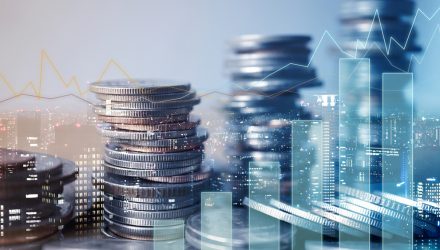Markets do very weird things because it reacts to how people behave, and sometimes people are a little screwy.
– Alan Greenspan
There is certainly some truth to the quote above. At the end of the day, it is not profits and earnings that drive stock prices, and it is not the state of the economy. Markets are driven by the law of supply and demand, which is a function of how people interact in the marketplace. As a result, markets will have periods when they appear to act rational, periods when they are flat-out erratic, and other periods where they just appear to be a little bit “screwy.”
Thursday was a “screwy” day in the markets. Meta Platforms (Facebook) saw shares jump more than +20%, after reporting earnings Wednesday evening that failed to meet already low analyst forecasts. Other technology stocks also saw their share prices rise substantially, many of which were set to report earnings after hours on Thursday. Earnings expectations for these companies also had low bars. The ending result of Thursday’s trading session saw the Nasdaq up +3.60%, while the rest of the market was actually flat-to-down; the Dow Jones Industrial Average was down -0.11%. This was the largest single day gap between the Nasdaq and Dow since March of 2021.
In the face of bad news and low expectations, the worst performing stocks from 2022 have been some of the best performers in 2023. These companies are reporting lower earnings, laying off employees, or pausing hirings. Yet, in many cases, their stock prices have risen to begin the year. Remember, company results don’t drive stock prices—supply and demand, and the actions of investors, do.
The stock market leads the economy. Stocks will go up prior to hearing any news of economic recovery. In 2021 we started to see large technology stocks experience higher volatility, prior to negative company reports. At one point in 2022, Meta stock was down -70%. It is no surprise that earnings would be low or even less than expected. In other words, perhaps the market discounted future (now current) negative news into its price last year.
So, the question is if stocks are improving, all while the news remains negative, is the market out the woods, or is this a “bear trap?” There are a few cases for both sides.
Positives:
Right now, many equity indexes have moved out of a “Bear” Market State and into a “Transitional” one. Volatility has declined, and markets have moved above key moving averages. Looking at our universe of equity securities, there are starting to be many more “buy” signals. At the same time, the leadership is beginning to shift, and the Nasdaq is outperforming the Dow Jones and S&P 500, indicating that investors may be willing to accept more perceived “risk.”
Negatives:
Technology stocks have risen quickly and sharply to begin the year. The sharp, fast bounce in a single month looks more parabolic than it does sustainable. The Dow Jones index, which has a higher concentration of industrials and traditionally “defensive” stocks, is only slightly positive for the year and has looked much more rational. It would be expected for the Nasdaq and Technology stocks to have some sort of “backing and filling” to relieve some overbought conditions. The large up days, like the one seen last Thursday (when the Dow Jones was flat), would not be expected to occur in a rational market.
Bottom Line
As a final note, something that has come up in the news lately is whether the market right now is “wrong.” In other words, many would look at the state of the economy and think that the market is mispriced and should go lower. Others may expect things to get much better and that the market is “undervalued.”
Markets are never wrong. For lack of a better phrase, the market “is what it is.” Market pricing is based on human emotion and beliefs about the future. As we started this update, those emotions and beliefs can sometimes be rational, other times be irrational, and sometimes just be screwy.
Don’t get caught up in the day-to-day noise, or try to make a prediction of where the markets will go. Markets are the perfect example of the wisdom and the madness of crowds. Because of this, they are unpredictable and counterintuitive.
You cannot control the markets, but you can control how you construct your portfolio, based on how “screwy” the market is today. Our adaptive portfolio, the Canterbury Portfolio Thermostat, has recently made some rotations to reflect today’s market environment. As we move through the market’s transitional state, we will continue to monitor for shifting conditions- bull or bear.
For more news, information, and analysis, visit the ETF Strategist Channel.

